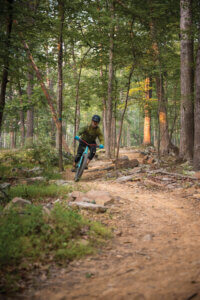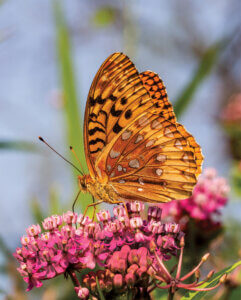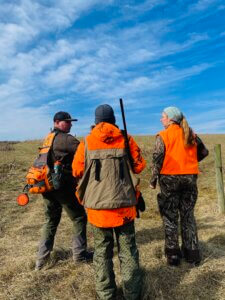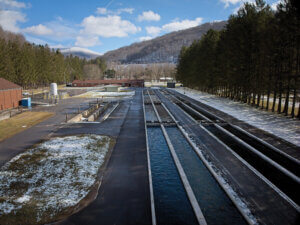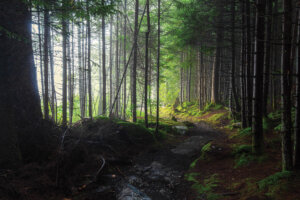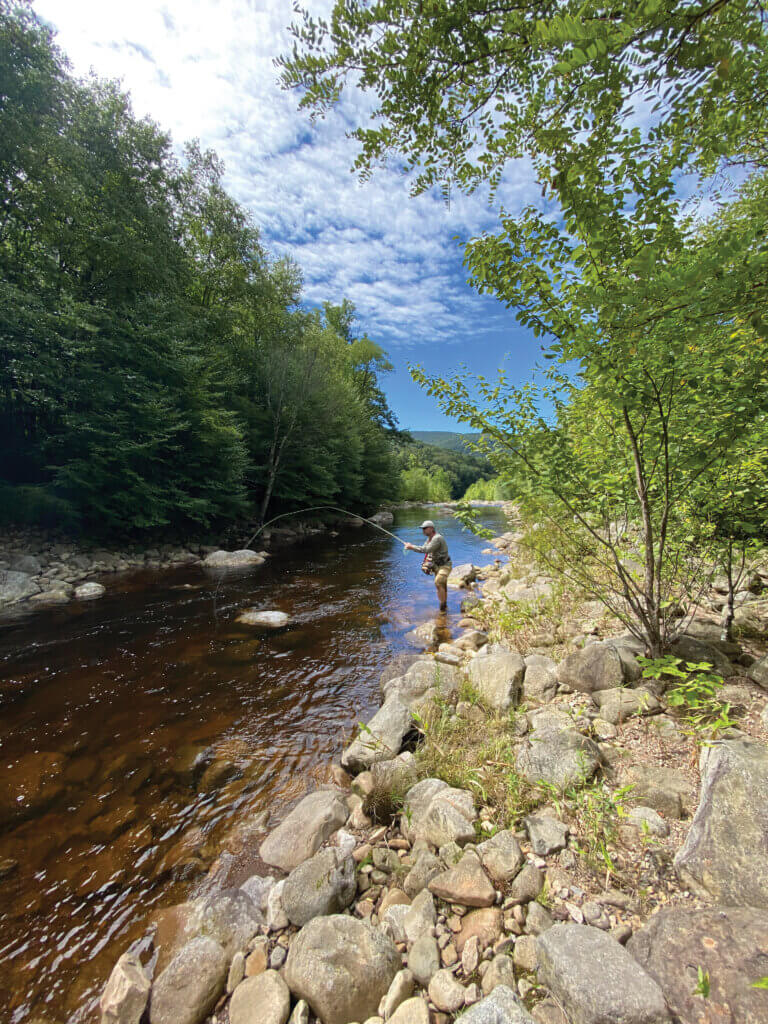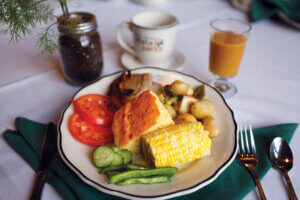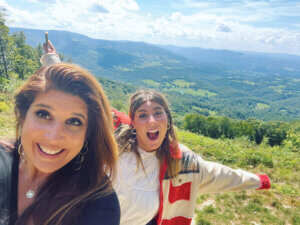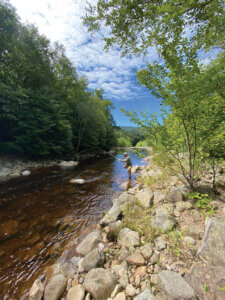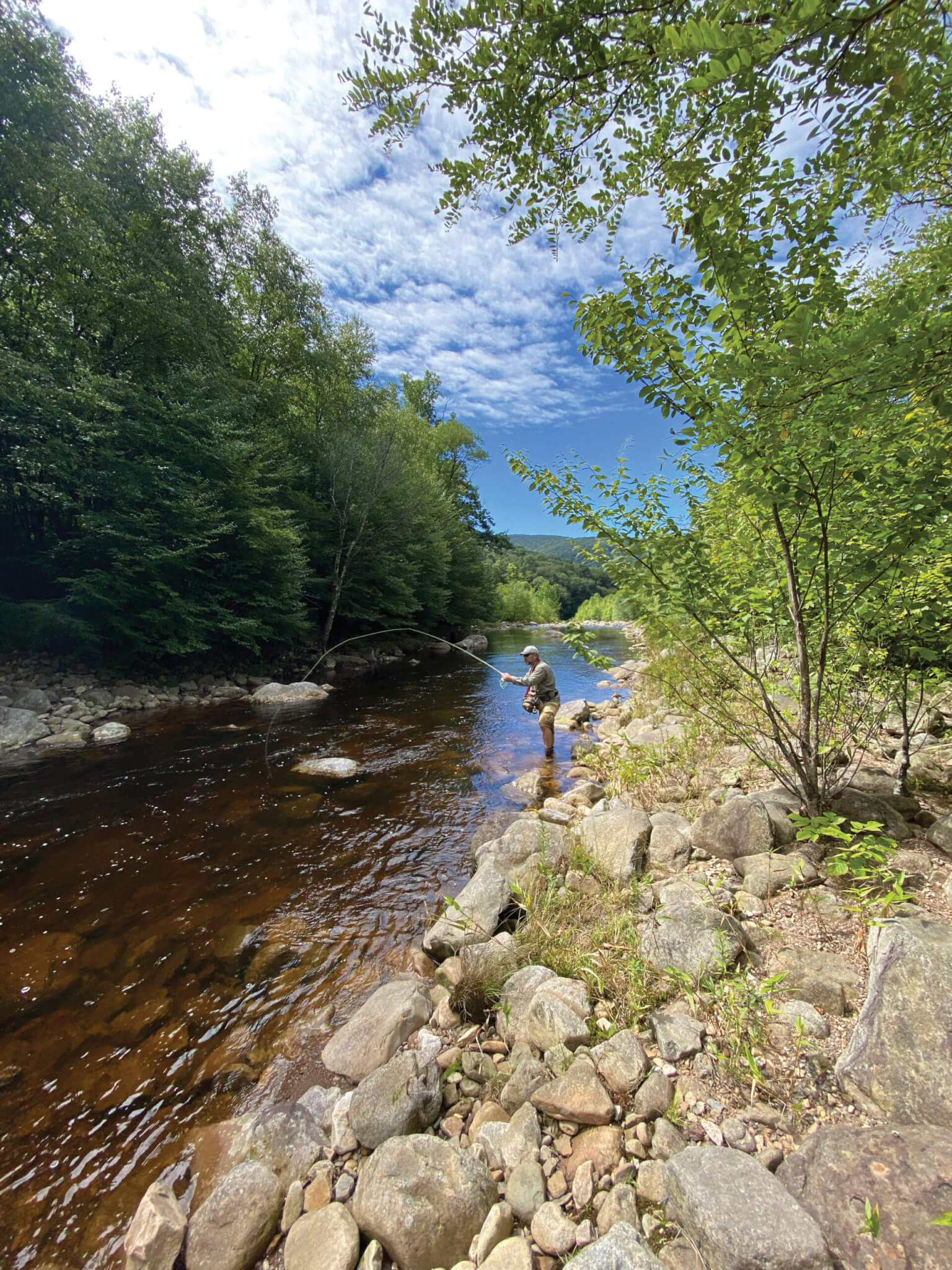
Fly fishing in the Mountain State provides a rewarding angling experience that’s worth the challenge for beginners.
This story was originally published in the April 2024 issue of Wonderful West Virginia. To subscribe, visit wonderfulwv.com.
written by Wendy Holdren
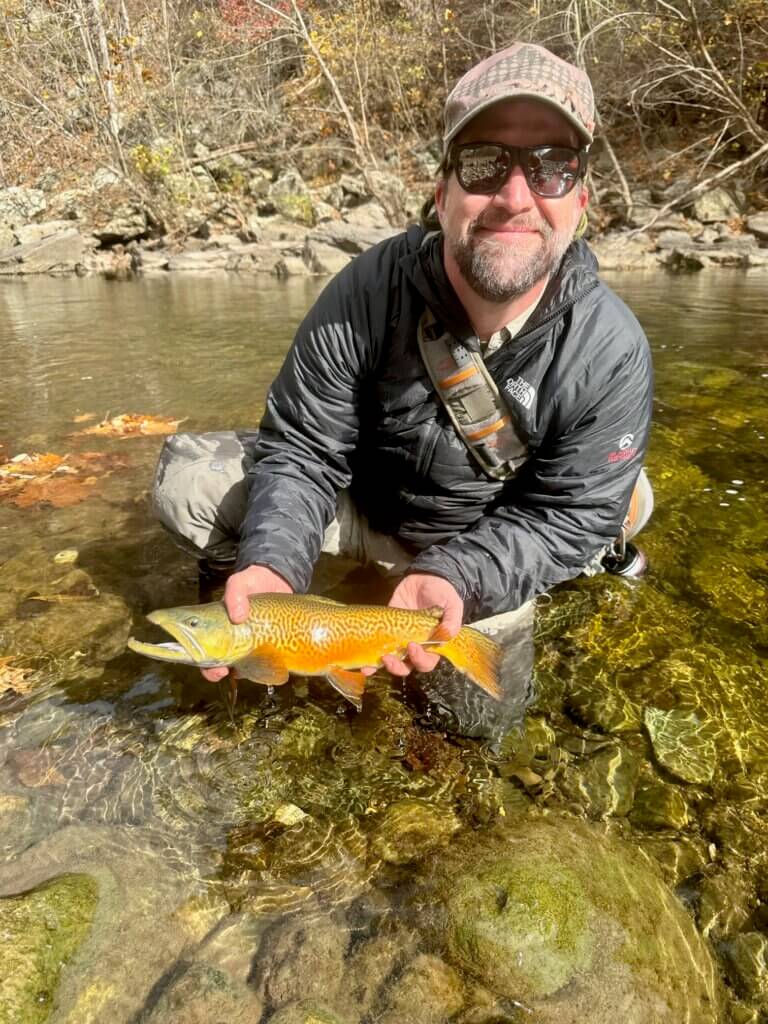
Photograph by Brian Bolyard
Greg Shaffer, assistant superintendent at Holly River State Park in Webster County, has been fly fishing for the better part of three decades, but he still remembers his first time out on the water. While he was in the military, he tagged along with his friend John on a fishing trip to Wyoming. On the first day, Shaffer simply watched and enjoyed the scenery. On the second day, John lent him his equipment so he could give it a try himself.
“I was frustrated,” Shaffer recalls with a laugh. But his frustration was only fuel for his mastery of the technique. He went to a local store and bought an off-the-shelf kit, including a fly rod, reel, and backing. John supplied the flies, as well as some constructive criticism. “He watched me and corrected me. He explained you have to let the line linger a bit, then bring it forward.”
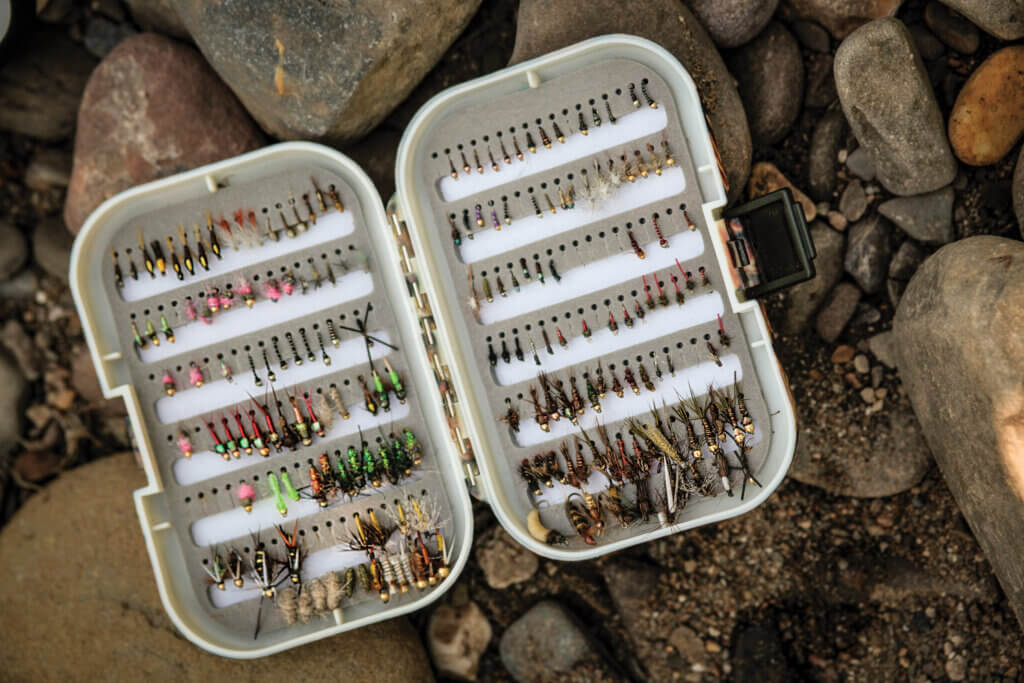
A Preston County native who was stationed in Washington, D.C., during his military service, Shaffer remained in the northern Virginia area for work following the end of his service. With fly fishing still on his mind, he asked a coworker about good fishing locations in the area. He took his previously purchased setup to a small, well-stocked trout stream in Thurmont, Maryland, and found his second excursion no less frustrating.

“The first five or six times I went, I might not have caught anything,” he says. But he was hooked on perfecting his casting method. “I was trying to get the fly out there, trying to be stealthy, thinking about what flies I should use.” Over the years, Shaffer has applied a trial-and-error approach to honing his skills: reading books, brainstorming with fellow anglers, and diving deeper into the sport. He took classes to learn how to tie his own flies and even build his own rod. “That’s the best part for me—being able to catch a native brook trout with something I’ve created from scratch. That’s really what keeps me coming back to it.”
Getting Your Feet Wet
For the uninitiated, fly fishing is a specific type of angling that uses a lightweight lure called a fly—the lure mimics small flying insects that attract fish to the surfaces of waterways. Because the flies are so lightweight, the casting equipment used in other angling methods do not work for fly fishing. The basic setup is a fly rod, a fly line, and artificial flies. The rod is usually made of fiberglass or graphite and is designed to pair with a fly reel on the bottom side of the rod to align with line guides.
After an angler has the basic setup, Shaffer recommends some additional equipment, such as a fly box to store flies and a vest or a sling bag to store your fly box or boxes. Depending on the fishing location, anglers may want to bring waders and a net. For small mountain streams, Shaffer says, this extra equipment isn’t necessary. But for bigger rivers like the Elk, these tools can come in handy. He recommends paying close attention to boot material. “Most people prefer rubber, but with the invasive slime on the rocks, they can become very slick,” he says. “Some people use felt, but they can hold spores, so be sure to wash them thoroughly before moving from one river to another to prevent cross-contamination.” Two of his most basic but essential recommendations are a good hat and a quality pair of polarized sunglasses. “It helps you see down into the water,” he says. “You would be surprised at the difference it makes.”

Photograph by Brian Bolyard
Casting is something every fly-fishing novice will want to practice, as the weight of the line is very different between bait fishing and fly fishing. In bait fishing, the weight of the lure or the sinker at the end of the line gives anglers their casting distance. But in fly fishing, it’s the weight of the fly line itself that carries the fly to the targeted destination. Because of this difference in the equipment, casting techniques used in other angling methods do not work for fly fishing.
For Shaffer, his preferred method is “10 and 2,” in which he brings his rod back to the “2” position on an imaginary clock, then brings it forward, forming a loop in the path of the line, and releases the line as the rod reaches the “10” position. “Then when your line goes out, it’ll straighten out in front of you,” he explains. Timing, pun intended, is an essential element in casting. There are both visual and touch indicators for when a line is ready to be released and shot forward. When an angler sees the loop, that means it’s time to release forward. They can also feel the same rough stop, which also means it’s time to shoot.
Customizing the Experience
During his time in Virginia, Shaffer saw an advertisement for a fly-tying class. He thought he would enjoy learning, so he signed up. The class taught him the basics and provided him with a small supply of threads and feathers. Oftentimes, anglers tie their flies in sizes and colors to match the insects that are attractive to the fish species they are trying to catch.
After the fly-tying class, Shaffer continued expanding his knowledge through a series of fly-fishing books. He learned that most flies are made with “dubby,” which is a blend of wool and synthetic materials. The author of the books, A.K. Best, favored “biots”—sturdy, tapered fibers or barbs pulled from turkeys’ wing feathers—and quills—like a stripped quill from a rooster—for the fly body. “That’s what I use primarily for all my flies,” Shaffer says. “I enjoyed Best’s style—the way he presented his information and why he favored one material over another.” Like Best, Shaffer prefers parachute flies rather than the standard upwing fly. The parachute style sits lower in the water, which he says better mimics an insect’s emergence from the water.

When he returned to his home state of West Virginia, Shaffer discovered his passion for rod-building. Around 2013, he joined the Charleston Chapter of Trout Unlimited, which offers courses for anglers throughout the winter months. He remembers taking the rod-building class at the Kanawha County Educational Center. He learned that the rod blanks are assembled in two to four sections, depending on the length of the rod. In addition to rod blanks, Shaffer explains, the rod-builder also needs guides and tying thread. He has since invested in a rod-building jig, which helps keep tension on the thread as he wraps it around the guide foot.
WVDNR’s interactive fishing map contains details on your favorite or prospective fishing locations, from catch-and-release regulations to streamflow conditions. Find it at www.mapwv.gov/huntfish.
Shaffer has gravitated toward fiberglass for his rod material over the years, which he describes as a slow-action rod, one that is very flexible, bends a lot, and takes a while to spring back during the cast. “I enjoy that part of it,” he says. “When you’re in the stream, waded up to your knees in the river, you’re in no hurry. You just throw your fly out there and hope for the best.”
Planning the Adventure
West Virginia’s state parks and forests offer abundant year-round fly-fishing locations. The tourism team recommends Audra, Holly River, Moncove Lake, Pipestem Resort, and Tygart Lake as excellent fishing locations in the spring. For summer, they recommend Beech Fork, Bluestone, Cedar Creek, and Stonewall Resort. And in the fall, anglers can head to Blackwater Falls, Cacapon Resort, Coopers Rock, Pipestem Resort, Tygart Lake, and Watoga.

Photograph by Brian Bolyard.
Shaffer recommends Laurel Fork at Holly River State Park, Dry Fork and Shavers Fork of the Cheat River, and Red Run near Canaan Valley. He’s a trout man himself, so he prefers areas where he can find native West Virginia brook trout. “I enjoy small mountain streams where I can catch native trout,” he says. “A 6-inch brook trout for me is equal to a 2-foot-long rainbow trout for someone else.”
The type of fish someone is trying to catch, along with their equipment preferences, will help anglers better locate where they want to cast their lines. “I also like to fly fish pools, meaning water that’s somewhat still but slightly moving,” Shaffer shares. “If you’re dry-fly fishing”—when your chosen fly floats on the surface of the water as opposed to dropping beneath—“you’ll want stiller water. If you’re net fishing or using wet flies, you want to find water with riffles, which are the shallower, faster-moving sections of a stream.” For beginners, he suggests a pond or a lake with a lot of open space, so they can practice their casting before dealing with trees, brush, rocks, and other obstacles.
While trout is a popular species for fly fishing, it is certainly not the only species anglers can catch. Pike, bass, carp, and more can be hooked while fly fishing West Virginia waters. So long as the fish’s food source is replicated properly and the fishing setup is suitable to catch it, any type of fish species can be caught by fly.
The sport can be intimidating, but patience and practice are key when getting started. “It will be frustrating,” Shaffer shares, “but don’t give up. Even though I’ve been fly fishing since the mid-’90s, I still find it challenging sometimes. That’s half the fun—the challenge.”
To find 2024 fishing regulations, licensing information, and tournament dates, visit www.wvdnr.gov/fishing.

